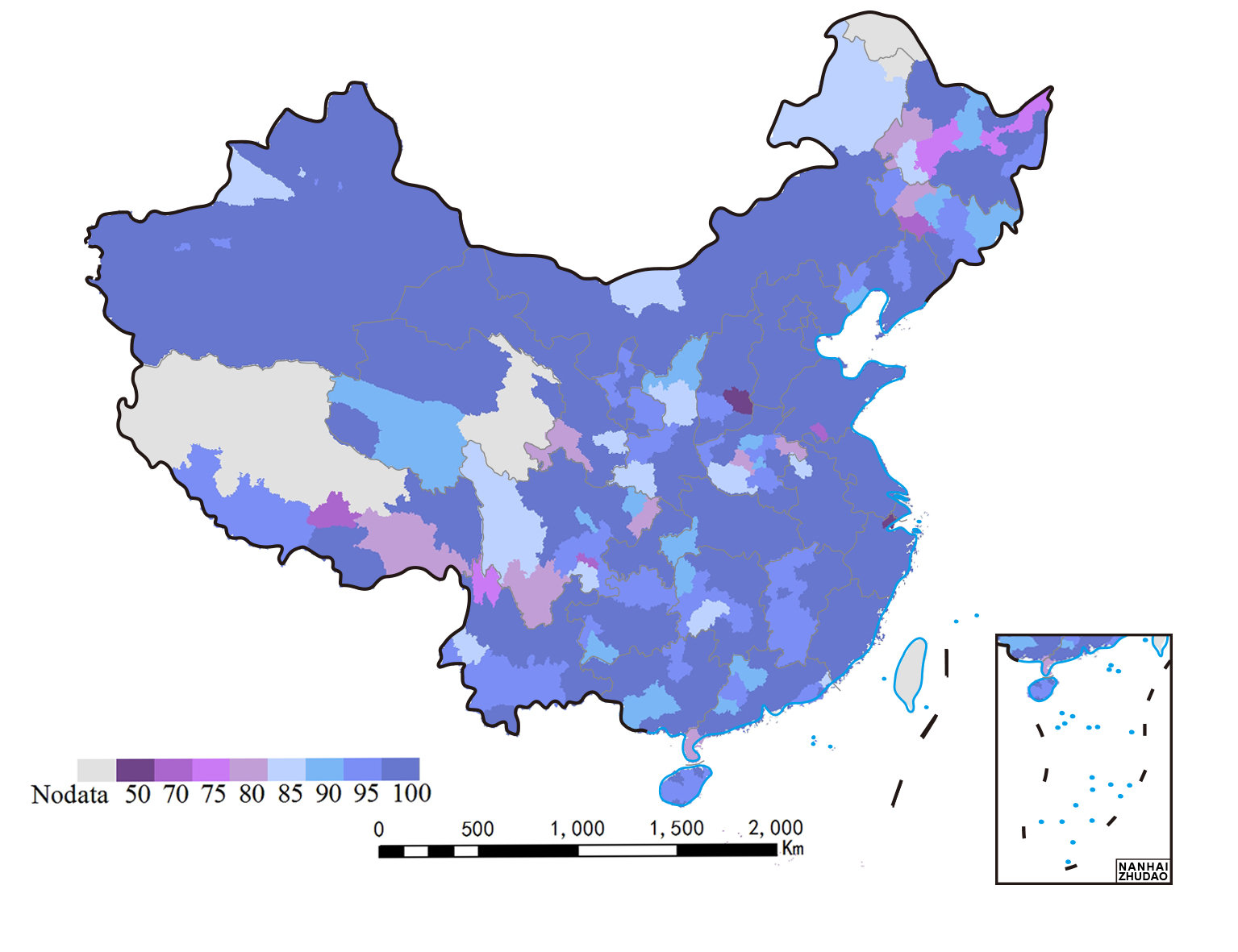SDG6: Clean Water and Sanitation
Monitoring the proportion of urban population using safely managed drinking water services in China(2019)
Scale: National
Study area: China
Safely managed drinking water is essential for ensuring a greater quality of life. Globally, 785 million people still lack access to basic drinking water sources and 263 million people spend over 30 minutes per round trip to collect water from an improved source. SDG 6.1.1 encompasses the proportion of the population that uses safely managed drinking water services. It is designed to monitor the safety levels for drinking water at global scales. Currently, this indicator is developed using data obtained from surveys. It not only requires a great deal of human, material, and financial resources, but is also incapable of obtaining high-quality information in a short period of time. The present case employs Big Earth Data analytics to combine statistical and network big data to expedite indicator results. Three sub-indicators were designed for monitoring SDG 6.1.1 in this report, including: the running water household rate, the water quality standard rate for drinking water sources, and the spatial impact scope coefficient for sudden water pollution events. These three sub-indicators were integrated to calculate the proportion of the population with access to safely managed drinking water in 2016 at the city level in China.
Target 6.1: By 2030, achieve universal and equitable access to safe and affordable drinking water for all.
Indicator 6.1.1: Proportion of population using safely managed drinking water services.
Method
The traditional monitoring method uses questionnaire results to calculate the proportion of the population having access to safely managed drinking water services in a fixed area. In this methodology, three sub-indicators are also calculated to characterize drinking water availability and quality. The area with safe drinking water supply is determined by calculating the rate of households with access to running water, the standard water quality of drinking water at sources, and a coefficient to measure the spatial impact of sudden water pollution events. Overlapping this information with the population distribution map provides the proportion of the population with access to safely managed drinking water services at the city level in China.
Data used in the case
The rate of households with running water was collected from the China Urban Construction Statistical Yearbook. This dataset is used to analyze the availability of drinking water.
Water quality standards at drinking water sources were obtained for drinking water safety level analysis from onsite data published on the local environmental protection agency website.
The coefficient for measuring the spatial impact of sudden water pollution events was calculated using data collected from online news sources referring to drinking water safety level analysis.
Results and analysis
The construction of drinking water infrastructure has greatly improved the availability and safety levels of drinking water in Chinese cities. In 2016, the proportion of urban population using safely managed drinking water services in China was 95.17%. Beijing featured the highest levels of drinking water safety, with 100% of the population having access to safely managed drinking water. The Tibet Autonomous Region had the lowest level of drinking water safety, with 84.08% of the population having access to safe drinking water. Generally, the safety of the drinking water supply in the developed eastern region was better than that in China's western region. Presently, the proportion of the urban population having access to safe drinking water in China has greatly improved. However, it is also necessary to improve and ensure drinking water management practices meet the objectives outlined by SDG 6.1.
Water source quality and unexpected pollution incidents are the main factors affecting regional drinking water safety. The impact scope and time of sudden pollution incidents are generally limited and short. It is suggested that emergency plans should be established in areas where there are long-term and seasonal risks to water quality at source areas. Moreover, backup water sources should be identified and developed.

Figure 1. Proportion of the population using safe drinking water in China in 2016.
| Highlights |
| In 2016, the proportion of urban population using safely managed drinking water services in China was 95.17%. Furthermore, the safety of the drinking water supply in the developed eastern region was superior compared to China's western region. Water resource quality is the main factor affecting regional drinking water safety, and emergency plans and backup water sources are necessary for cities that have long-term and seasonal risks to water quality. |
Outlook
Currently, an effort is being made to improve the coverage of indicators by improving data collection methodologies, especially in rural areas. This is necessary to monitor and evaluate indicator SDG 6.1.1 in China during the 2017-2020 time period. The results from this analysis will be used to provide information and suggestions regarding drinking water management to government departments at the city level.
The main challenge for calculating indicator SDG 6.1.1 is the availability of data. Future improvement for this indicator will focus on identifying other relevant sub-indicators at country and regional levels using multi-source data.

